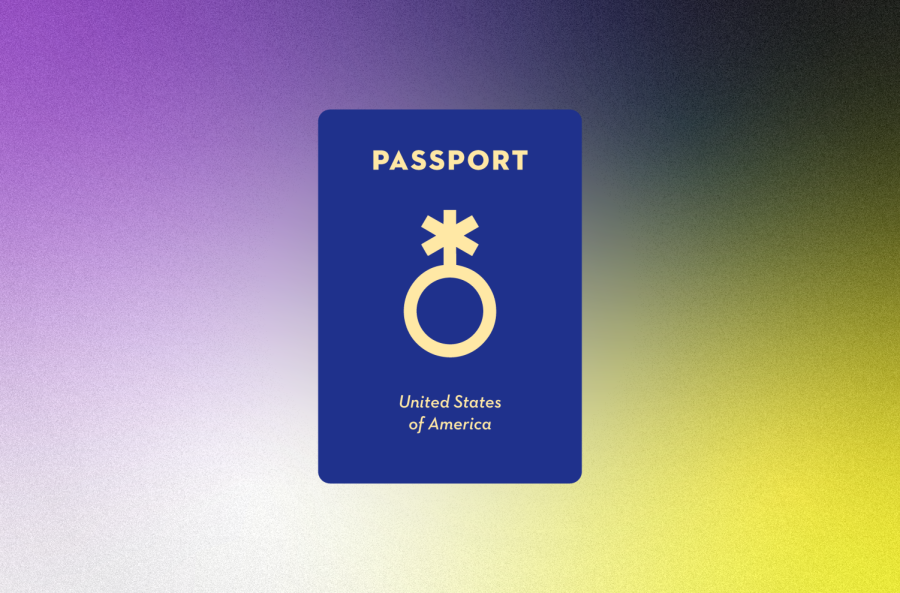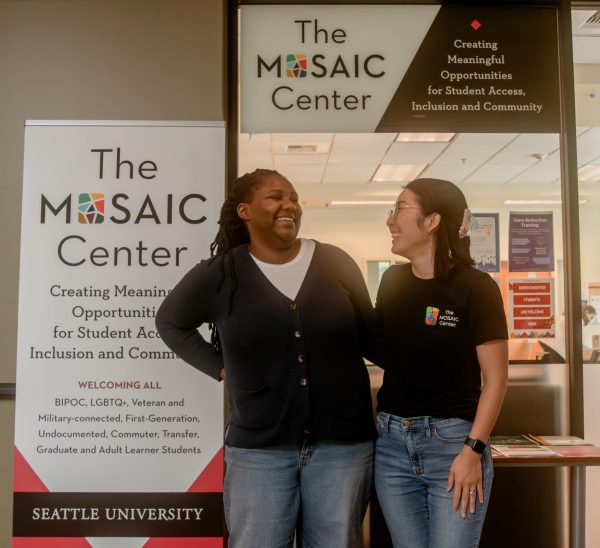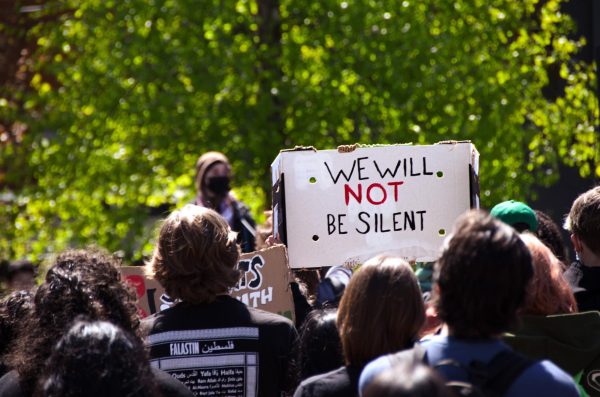The ‘X’ Option: The State Department Issues the First Gender-Neutral Passport
In a monumental series of events, the U.S. Department of State issued its first gender-neutral passport this October, after a May 2020 order by a circuit court to provide alternative gender identity options on federal documentation.
Dana Zzyym, the recipient of the first U.S. passport marked with an ‘X’ gender designation, is an intersex activist who has been fighting for proper representation on their passport since 2015. Now, American citizens are able to apply for a gender-neutral designation on their passport, with plans to increase accessibility for ‘X’ documentation next year.
Tatiana Tomanek, a fourth-year math major and the president of Triangle Club, explained the importance of the change.
“A lot of people in the community don’t identify as binary male/female. There are people who are non-binary, gender-fluid or intersex,” Tomanek said. “They’ve been forced to choose between one or the other, even though they are neither or both. The ‘X’ finally gives people that don’t identify as either male or female a chance to show on legal documents that they aren’t male or female.”
Like Zzyym, Second-year Law student Jay Conrad has been invested in accurate gender representation on government documents for several years. Conrad was an advocate for the approval of the gender neutral driver’s licenses in Washington, which have been regularly issued since late 2019.
As the president and founder of the Nonbinary, Gender Non-Conforming and Allies Student Association (NGNCA), Conrad shared their excitement after hearing the recent news with other members of the Seattle U community.
“I was ecstatic. The first thing I did was take a screenshot and send it to the officers in the NGNCA,” Conrad said. “It’s a landmark choice that the federal government is making in order for us to get the types of legal protections that we need in order to be able to function within this society.”
Unlike Washington, most states do not recognize more than two genders on government-issued identification. However, federal recognition of gender identities beyond male and female sets a precedent for the future of gender-nonconforming Americans that other states may follow.
Accurate representation on federal identification documents eases the process of granting additional protections that cisgender people would not have to consider, including access to housing, employment security and real-world applications of anti-discrimination laws.
The U.S. is not the first country to issue a gender-neutral passport, or even other gender-neutral forms of identification.
Sophia Anderson, a first-year law student and event coordinator for the NGNCA, highlighted the gains in recognition of non-binary individuals throughout the international community.
“There have been gender-neutral passports issued dating as far back as 2008—I think Australia was the first one. You can also get a gender-neutral driver’s license in Pakistan,” Anderson said.“I’m hoping to get my passport and state license updated within a year.”
Travel, especially via domestic airfare and international travel, has historically been difficult for people whose gender does not align with their government-issued identification. Even with a gender-neutral driver’s license, having a passport that designates a different gender identity brings up additional challenges. In some cases, a mismatched ID can be dangerous and lead to dead-naming, unnecessary frisking or other security protocols that can harm nonbinary people.
“In every facet of my life, I am recognized as nonbinary with the exception of when I travel, and it is always a stark experience for me to all of a sudden be getting misgendered out of nowhere,” Conrad said. “Being able to do something that I love [traveling], like any other person, and being able to do that without harm or feeling like I’m faking being someone else is a level of relief I was not expecting to get this quickly.”
Sarah Torset, a third-year physics major and LGBTQ+ studies minor, addressed the importance of having accurate documents for safe travel.
“To have a gender marker that doesn’t match your identity can out you or make it unsafe for yourself in a position where you don’t look like the gender which is presented on your documents,” Torset said.
In addition, they underscored the importance of the ‘X’ signifier as a matter of human dignity when engaging with others.
“A lack of nonbinary options on documents can be quite dehumanizing and it makes it feel like we don’t belong here, like we’re not really people because we don’t have our own marker. I think the amount of dignity and self-respect that one can get from having that option is huge and it makes us feel more included and more respected,” Torset said.
Openness to the fluidity of gendered concepts from an authority such as the U.S. government carries weight for nonbinary people even outside of travel.
Ariadna Quinares, another officer in the NGNCA, noted that recognition coming from a governmental authority provides external support in the face of those who do not respect the validity of nonbinary gender identities.
“Now that it’s officially recognized, it will help people who are in the process of discovering themselves feel more comfortable in their own identity and exploring their identity, especially within the Latinx community,” Quinares said.
Deconstructing binary notions of gender, which can be traced back to colonialist roots, provides a more comprehensive representation that better encompasses the customs and practices of various cultural groups around the world. Indigenous peoples spanning across the Americas, the South Pacific and elsewhere have several genders other than ‘male’ and female,’ the most notably recognized being two-spirit. Religious groups are also more accurately represented with fuller conceptions of gender.
“When I was advocating to get the ‘X’ on the Washington state ID, one of the most interesting public comments I heard was from a Rabbi who had shown up and said being able to choose only between male and female is a violation of their religious freedoms because Judaism recognizes six genders,” Conrad said. “It’s important to remember that across the board this is going to be a better representation of the types of voices that are often silenced.”
Adriana Clifton, vice president of OutLaws, Seattle U School of Law’s queer student association, is concerned about the immediate impact of federal recognition superseding states’ rights, but remains confident that the future is hopeful.
“I think it’s a step in the right direction, but if history provides any clues, the fight is not over,” Clifton said. “I worry about more conservative states putting their foot down, but I think that’s going to end up being detrimental to them in the long run.”
Opposition to the approval of the ‘X’ designation is popular among conservatives, and the Office of Management and Budget still needs to approve the change while right-wing advocates argue that markers other than ‘male’ and ‘female’ limit the capabilities of identity documents. In retort, Clifton simply stated:
“There are other indicators of someone’s identity [besides sex].”
Queer and gender nonconforming law students at Seattle U are looking toward other forms of governmental recognition as the next steps for proper representation, such as space for gender neutrality in the census and on birth certificates.
“The census is the next big step,” Conrad explained. “Right now, we don’t actually know how many nonbinary people live in the U.S., we don’t have any sort of data on that. It’s not a cohesive picture.”
The U.S. Census provides the data for which roughly $880 million in governmental aid is allocated every fiscal year across the subpopulations that need it most. Until nonbinary people are included in the head count, there is no space for them to receive a portion of these funds or the protections they grant.
Inclusion in the census would also help facilitate protections for nonbinary people within the social security network. Speculation on gender-neutral birth certificates also bodes well for the future of genderqueer people.
“A really progressive next step would be letting gender identity be an aspect of [oneself] that they are able to explore and figure out right from the start, but I don’t know how long that would take,” Clifton said. “Hopefully society will get to a place where we recognize that we don’t know who people are going to become or who people are. People are so much more than their gender or sexuality.”
An ‘X’ option on passport documentation is a change that LGBTQ+ advocates hope will lead to neutral designations on birth certificates, a count of nonbinary peoples in the census and the comprehensive recognition of gender minorities throughout the U.S.. While it is only a first step, it marks an unprecedented step toward inclusion on a federal level within the American government.











